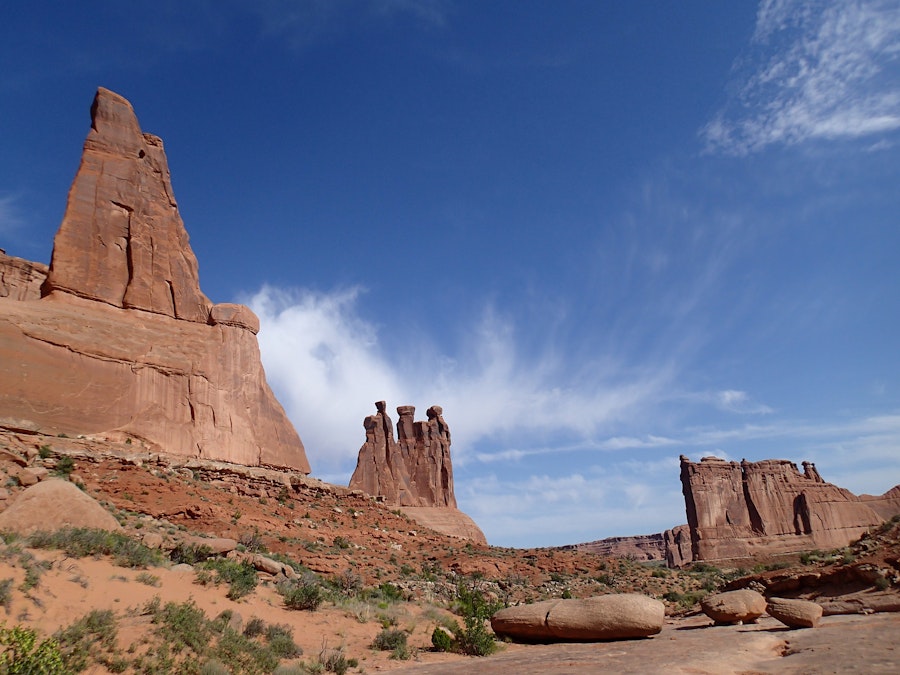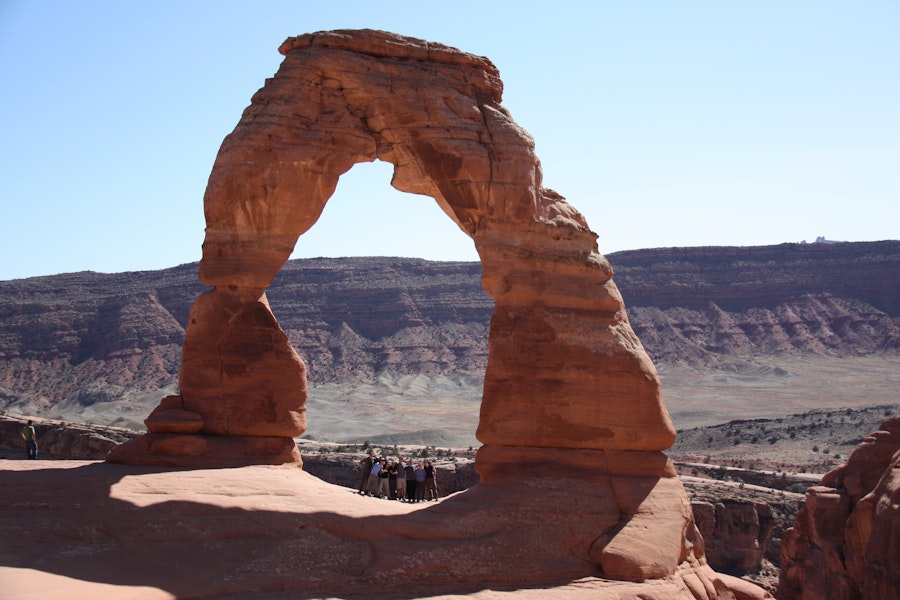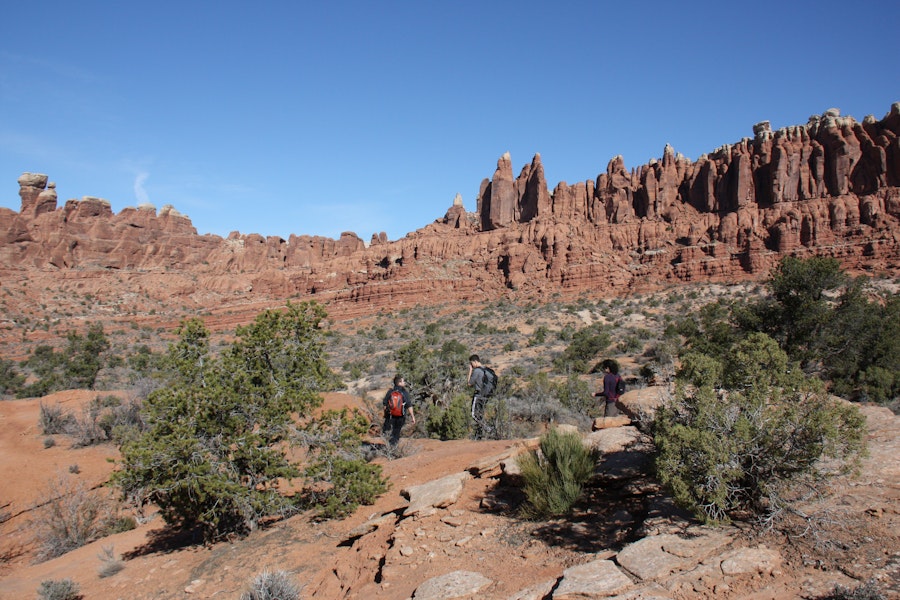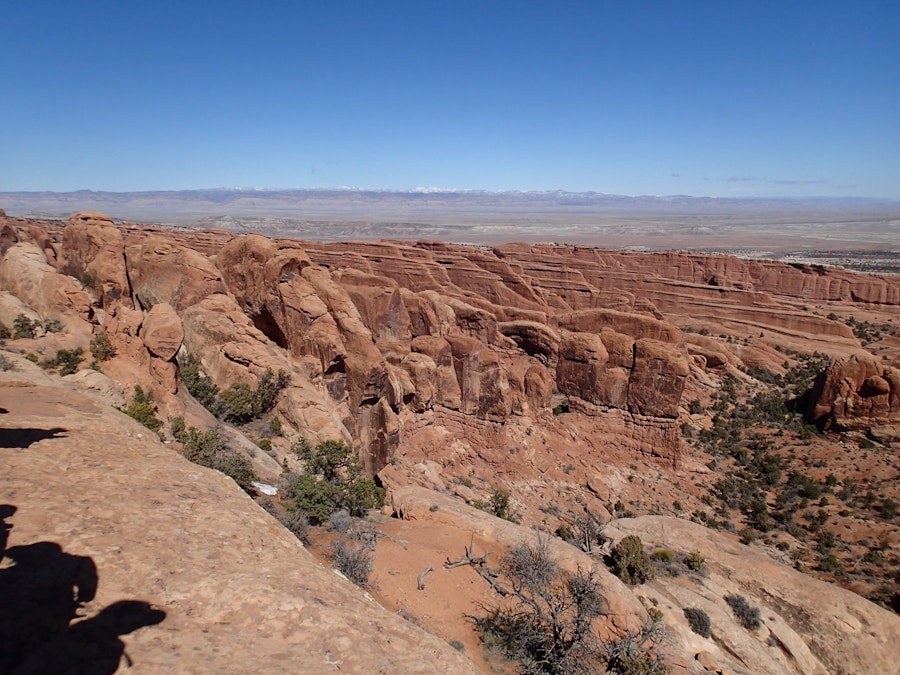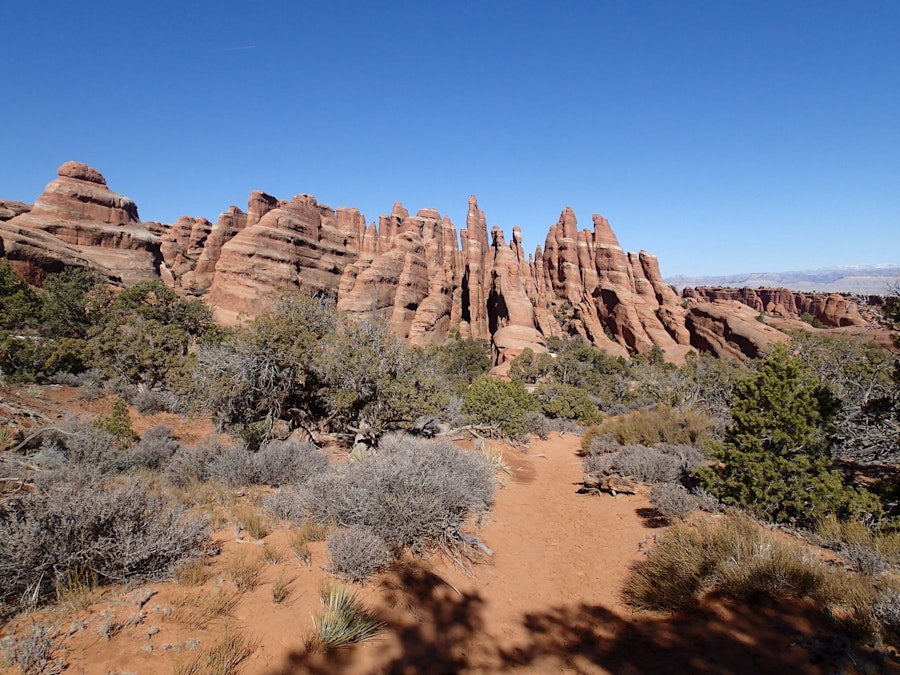Arches National Park is known for the largest concentration of arches in the world. Arches has more to offer with great camping, photo opportunities and hiking. So beware and be aware of these 10 items when planning your trip.
1. Cryptobiotic Soil
At every trailhead in Arches you will see an interpretive sign explaining what Cryptobiotic Soil is and it’s importance to the fragile ecology of the desert. Basically, these small crusted mounds are living organisms composed of Cyanobacteria. This crust aids in water retention, helps prevent wind erosion, provides nutrients to surrounding plants and creates a foothold for other plants to attach and germinate. I’ve read reports that it can take 50 to 250 years for cryptobiotic soil to regenerate once trampled on. Just one more reason to stay on designated trails!
2. Snakes
There are eight species of Rattlesnake in Arches National Park and over my more than 20 visits to the park over the years, I’ve yet to encounter one. The snake in the photo is a Gopher Snake I encounter in 2016. The markings are somewhat similar to that of a Rattlesnake but there are some tell-“tail” signs. As implied, the tail of a Rattlesnake has hollow segments that make a warning “rattling” sound if you get too close. The Rattlesnake also has a triangular shaped head. The Gopher snake does not have these two traits. Also, the Gopher snake is not venomous. However, they can bite if you try to handle them. Bad idea for many reasons. When encountering any snake, give a wide birth around the snake or back away from it. Do not try and handle the snake or try and move it. Also, killing a snake in a National Park is illegal (so I’m told).
3. Yucca Plant
The Yucca plant is common along all trails in Arches National Park. It has long shoots with very hard tips. The plant is also referred to as Spanish Bayonet or Spanish Dagger for a reason. The hard tips can easily penetrate long pants and puncture your skin. It is extremely painful and often the tip can break off once embedded. Most likely an encounter with this plant would occur if you venture off trail. But even along the trail, be careful, especially when taking photos as you may not pay attention to what is immediately in front of you just below knee height.
4. Climbing on Arches
It is unfortunate that this has to be pointed out. Common sense should tell someone this is not the best idea. Beyond the safety aspect, these folks ruin the photo opportunity for many other visitors to this arch (Double O at the end of the Devils Garden Trail). The Park Service has a regulation stating that climbing on any named or unnamed arch greater than three feet wide, is prohibited. Respect the arch and respect the rights of other visitors to enjoy the arch in it’s natural state (no one on it!).
5. Line up for Photos!
Every time I visit Arches, I am drawn to Delicate Arch. Not only for the arch itself but the exposed slickrock trail is enjoyable to hike and lately, I’ve been jogging up. A great workout for 1.5 miles up. My last year was a bit disturbing. It was the first I’ve seen such a long line of people waiting to take photos under the arch. Of course, over the years I have seen people waiting their turn but this time (May 2016) the line was as if someone was handing out money. But, it gets worse. More than several people on the line were down right rude and many, just cutting in front of the line with complete disregard to others patiently waiting their turn. So add patience to the list of things to bring on this hike!
6. Sunsets
I also take the time find a good spot to watch the sunset. While watching the sunset over the horizon is beautiful, often, the best view is opposite the sunset. The sun illuminates the Navajo and Estrada sandstone providing a glow to the cliffs that should not be missed. Keep in mind that the show is not over once the sun sets past the horizon. If some clouds are present, they tend to go through shades of red, orange or pink about 20 minutes later.
7. Sunrise
The sunrise in Arches National Park can be just as impressive as the sunsets. This is easy to see if you are camping in Devils Garden. Most of the campsites are unobstructed to a distant horizon. Of course, a little cloud cover helps. What the photo doesn’t translate is the sound of coyotes that are very active in the early morning hours around Devils Garden.
8. The Arches
Needless to say, this is why you visit the park. Arches National Park has over 2000 arches defined by any span greater than three feet. Some of the most famous arches are Landscape, Delicate, Turret, The Windows, Double Arch and Skyline.
9. Camping
Devils Garden is the only campground in the park. There is 51 spots available, two of these are designated as group sites. Up to 10 people and 2 cars per site are permitted. Sites cost $25 per night and book up fast. The campground is the farthest point you can drive to from the entrance and 23 miles from Moab. Make sure you have all your supplies with you. This is one of my favorite campgrounds in the National Park system. I always stay in the same tent spot. The campground will be closed from March 1, 2017 to October 31, 2017 for a major construction project.
10. Explore Dinosaur tracks and fossils
There are three dinosaur track areas just along and outside the western border of the park. From north to south they are, Copper Ridge tracks, Klondike Bluff tracks and Willow Springs tracks. There are some others in the area but these are to closest to the park and worthy of some exploration.












